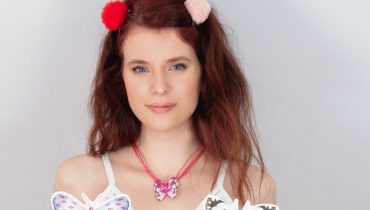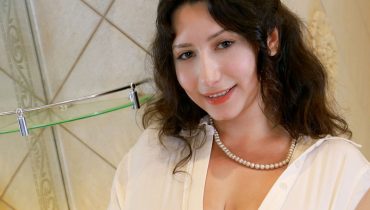For most of her twenties, Abigail Turner lived with an invisible weight. “People saw my smile but not the storm underneath,” she says. “I was the friend who held everyone else together — but inside, I was breaking.”
Her journey toward peace began not with medication or a quick fix, but through therapy for anxiety and emotional healing. What started as a reluctant step into counseling became the turning point of her life — one that taught her how to breathe again, trust again, and finally feel safe inside her own mind.
Living with Anxiety: The Silent Struggle
Abigail describes her anxiety as “background noise that never stopped.” From racing thoughts to sleepless nights, every day felt like a test of endurance. “I thought being anxious was normal — that it just meant I cared too much,” she explains. But when panic attacks began affecting her work and relationships, she realized she needed help. “I remember standing in a grocery store, heart pounding, hands shaking, trying to breathe. That was the moment I knew I couldn’t do this alone.”
According to the National Institute of Mental Health (NIMH), more than 30% of adults in the U.S. experience an anxiety disorder at some point in their lives. Yet many, like Abigail, delay treatment for years due to stigma or fear. “Therapy felt intimidating,” she admits. “I didn’t know what to expect. I thought it meant I was weak.”
Finding the Right Therapist
Her first experience wasn’t ideal. “I went once, cried through the session, and never went back,” she laughs gently. “It’s funny now, but at the time I felt like a failure.” A few months later, after encouragement from a close friend, she tried again — this time with a therapist who specialized in cognitive behavioral therapy (CBT), a science-based approach for anxiety. “She didn’t just listen,” Abigail recalls. “She taught me how to listen to myself.”
Through guided exercises, Abigail learned how her thoughts triggered her anxiety. “CBT helped me separate facts from fears,” she explains. “Instead of thinking ‘everyone hates me,’ I learned to ask, ‘what evidence do I actually have for that?’” That small shift — from reacting to reflecting — changed everything.
Her therapist also introduced mindfulness and grounding techniques. “When anxiety hits, your body thinks you’re in danger,” Abigail says. “Learning to breathe, to notice my surroundings, to anchor myself — that saved me.” She now practices deep breathing every morning and uses short meditation sessions through apps like Headspace and Calm. “At first, I thought meditation was just sitting and doing nothing,” she says. “But it’s really about returning home to yourself.”
The Role of Consistency
Like physical fitness, emotional healing requires regular practice. Abigail attended weekly therapy for six months, then shifted to biweekly check-ins. “It’s not like you’re fixed overnight,” she says. “Healing is repetition.” Even after her sessions ended, she continued journaling daily — writing down fears, triggers, and victories. “Therapy gave me tools. Journaling keeps them sharp.”
Her therapist also encouraged physical exercise, which is proven to lower anxiety levels by reducing cortisol and releasing endorphins. The Mayo Clinic notes that even 30 minutes of brisk walking can improve mood and energy within days. “I used to dread movement,” Abigail says. “Now I think of every walk as therapy with my sneakers.”
Emotional Healing Beyond Therapy
As Abigail’s anxiety began to fade, deeper emotions surfaced — grief, self-doubt, and loneliness she had buried for years. “That’s when therapy turned from survival to self-discovery,” she says. Her therapist helped her reframe healing as an ongoing process rather than a finish line. “I learned that emotional healing isn’t about erasing pain. It’s about learning from it.”
She explored trauma-informed therapy, which focuses on how past experiences shape present reactions. “I realized that my perfectionism came from growing up needing to earn love,” she says quietly. “Understanding that helped me stop chasing validation.” With time, she began setting healthy boundaries and practicing self-compassion — two skills she calls “the real therapy homework.”
Abigail also joined online support groups, where she connected with others managing anxiety. “Hearing other women share the same struggles made me feel less broken,” she says. Digital therapy platforms such as BetterHelp and Talkspace provided flexibility and privacy. “On weeks I couldn’t make in-person sessions, I could still message my therapist,” she says. “That consistency kept me grounded.”
The Power of Emotional Awareness
One of Abigail’s biggest breakthroughs came when she stopped judging her emotions. “I used to think feeling sad meant I was failing therapy,” she says. “But emotions aren’t enemies — they’re messengers.” She now uses mindfulness-based journaling to identify emotional patterns. “When I feel anxious, I ask, ‘what is this emotion trying to tell me?’ Sometimes it’s just that I need rest.”
Her therapist introduced the concept of “emotional hygiene” — maintaining mental health the same way one maintains physical health. “You don’t shower once and stay clean forever,” Abigail laughs. “Therapy taught me that emotions work the same way — they need daily care.”
Abigail began practicing gratitude journaling and compassionate self-talk. “It’s not about toxic positivity,” she clarifies. “It’s about balance — allowing yourself to feel fear but not be consumed by it.”
How Therapy Changed Her Life
Today, Abigail describes herself as “a work in progress — but one that’s worth the effort.” Her anxiety hasn’t vanished, but it no longer controls her. “I still have anxious thoughts,” she admits. “The difference is, now I have tools to meet them with calm instead of panic.”
She also credits therapy with improving her relationships. “I used to shut down when I felt overwhelmed. Now I communicate,” she says. Learning emotional regulation helped her express needs without guilt or fear. “Therapy didn’t just make me happier — it made me more authentic.”
Abigail now encourages others to seek help without shame. “Therapy is not about being broken,” she emphasizes. “It’s about being brave enough to look inward.” She believes that anxiety can become a teacher rather than a tormentor. “My anxiety showed me where I needed to heal — and therapy gave me the map.”
Practical Advice for Managing Anxiety and Healing Emotionally
Abigail offers thoughtful advice for anyone beginning their journey with therapy:
- 1. Find the right fit: “Don’t give up if your first therapist doesn’t feel right. It’s like dating — connection matters.”
- 2. Show up honestly: “Therapy only works if you’re real. You can’t heal what you keep hidden.”
- 3. Practice between sessions: Apply what you learn — journaling, breathing, gratitude — outside the therapy room.
- 4. Remember progress isn’t linear: Some weeks will feel heavy. Healing is movement, not perfection.
- 5. Build community: Join safe spaces — support groups, mindfulness classes, or online therapy apps — for connection and accountability.
She reminds people that therapy is not a one-size-fits-all process. “What heals me might not heal you — and that’s okay,” she says. “The point is to keep trying until something clicks.”
When to Seek Professional Help
While therapy can benefit anyone, Abigail stresses the importance of recognizing when anxiety becomes unmanageable. “If you can’t sleep, can’t focus, or you’re withdrawing from life, that’s not just stress — that’s a sign you need help,” she says. The U.S. Mental Health Helpline and the National Alliance on Mental Illness (NAMI) provide resources for those in crisis. “There’s no shame in reaching out,” she adds. “Healing begins the moment you stop hiding.”
Abigail’s Reflections on Healing
Looking back, Abigail sees therapy not as a treatment but as a relationship — with her mind, her emotions, and her future. “It taught me that anxiety isn’t the enemy — it’s my body’s way of saying I need care,” she says. She still attends monthly sessions and practices mindfulness before bed. “I don’t aim for a life without anxiety,” she says. “I aim for a life where anxiety no longer dictates my choices.”
Her message to others is simple but powerful: “If you’re struggling, you’re not broken. You’re human. And healing is always possible.” As she closes her journal at the end of each day, Abigail writes the same sentence — a mantra born from her therapy sessions: “I am safe. I am healing. I am enough.”




























































